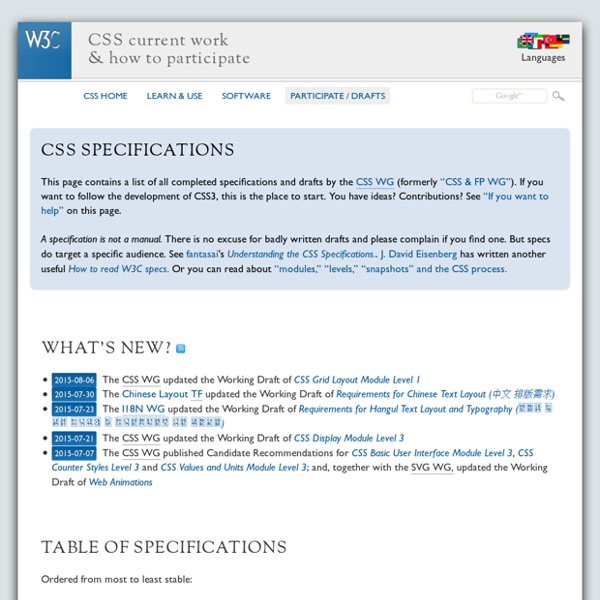



css Zen Garden: The Beauty in CSS Design Style Master CSS Editor for Windows and Mac OS X #eCSStender.org { content: "Homepage"; } Selectivizr - CSS3 pseudo-class and attribute selectors for IE 6-8 Les frameworks CSS Pour les non professionnels, le développement HTML / CSS est souvent un véritable casse-tête: positionnement des éléments, subtilité des règles CSS, compatibilité avec les navigateurs… autant d’obstacles qui font perdre beaucoup de temps. Jusqu’à présent, les outils de développement CSS ne nous aidaient pas vraiment: la majorité sont de simples éditeurs de texte, qui affichent juste le rendu de la page. L’arrivée des frameworks CSS peut donc être une bonne nouvelle. J’avoue ne pas être vraiment convaincu, c’est pourquoi je vais réalisé quelques tests « grandeur nature », afin d’évaluer la réelle valeur ajoutée de ces outils. Préambule Je suis rescemment tombé sur plusieurs articles discutant du framework BluePrint. J’ai donc ré-orienté mon dossier en abordant le sujet de façon plus concrète: Je vais faire un très rapide rappel des concepts de Grid CSS et de Framework CSS, tels que je les ai compris,puis continuer par un test grandeur réelle des trois frameworks sur des exemples précis.